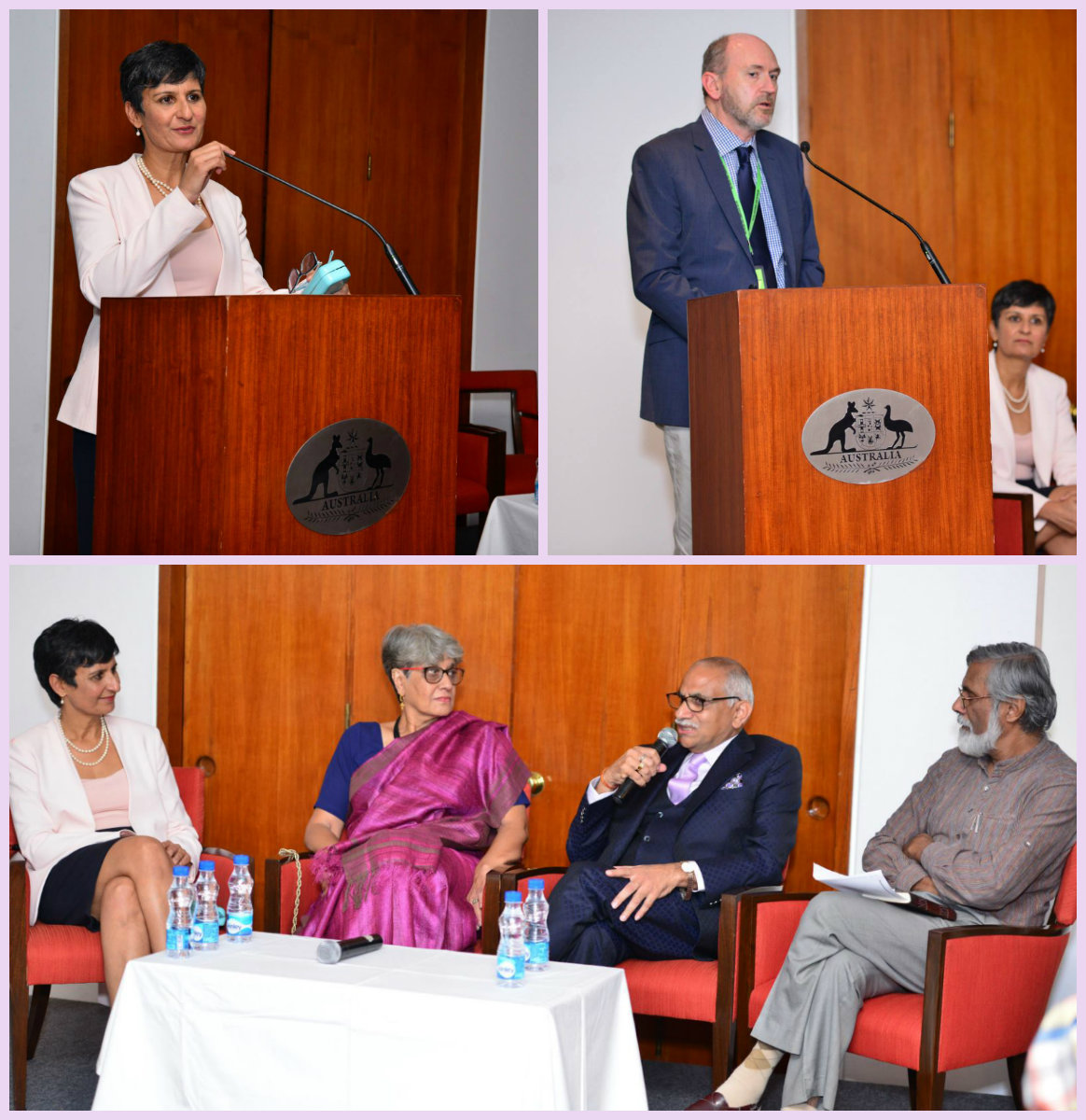High Commissioner Harinder Sidhu hosts a panel discussion to celebrate the work of architect Joseph Stein
“I’ve often thought that good architecture is more important than great architecture”- Joseph Allen Stein
 Many, in awe of its surroundings, would walk Joseph Stein Lane in Lodhi Estate every day; few would know it’s the only one named after an architect, who also designed two of the most frequented socializing spots for India’s intellectuals - India International Centre (IIC) and India Habitat Centre (IHC) among other buildings. While the looks of many institutions emanated from the sketches he imagined, in embassies, the design of the residence of the Australian High Commissioner is the only one he envisaged.
Many, in awe of its surroundings, would walk Joseph Stein Lane in Lodhi Estate every day; few would know it’s the only one named after an architect, who also designed two of the most frequented socializing spots for India’s intellectuals - India International Centre (IIC) and India Habitat Centre (IHC) among other buildings. While the looks of many institutions emanated from the sketches he imagined, in embassies, the design of the residence of the Australian High Commissioner is the only one he envisaged.
Joseph Allen Stein was a visionary who made immense contribution in developing an Indian modern vocabulary in architecture, which the city dwellers continue to experience as they weave their way through the corridors of the various buildings he created in Lodhi Estate, nicknamed “Steinabad”.
One of the many important New Delhi buildings designed by Stein is the Residence of the Australian High Commissioner. Some other important landscapes which he designed are ofLodhi Gardens, Triveni Kala Sangam at Mandi House and the American International School.
Stein, a Padamshree awardee, whose architectural mastery could not go unnoticed even by highest of echelons in India brought distinctly Indian aesthetic to modern architecture. His creations were a unique blend of the traditional and the new
which fitted beautifully in the idea of newly independent India.
To celebrate the work of this renowned architect, the Australian High Commissioner, Ms Harinder Sidhu organized a panel discussion at her residence – the very building Stein designed himself.
On living in a house designed by the renowned architect, Ms Sidhu said, “Having a residence in Delhi designed by Joseph Stein must be for Australians the same as having your home designed by Jørn Utzon – the Danish architect, who created the Sydney Opera House”, said Ms Sidhu, adding, “It is a great privilege, and living here is a daily delight. The things that Stein strove for - a building that is at one with its garden and surroundings, a sense of openness and freedom of movement, of light and air-they are all apparent every moment in this place.”
Among the panelists were architects Ashok B. Lall, who worked with Joseph Stein in the seventies; JK Jain, a Stein disciple and follower; and Meena Mani, a close associate of Stein.
Mr Lall described Stein’s work at the High Commissioner’s residence as one where there is grace without ostentation. “This was a value he really believed in,” he added.
Ms Mani, meanwhile said that Stein believed that “if a building has to stand the test of time, time has to go in the making of it”.
His buildings have testified to this dictum and have withstood the test of time. She also spoke of how Stein was concerned about the environment long before environmental concerns began surfacing in the National Capital. “All his buildings are designed very sensitively with respect to the environment. They sit like pavilions in the garden,” she added.
Mr Jain spoke of being taught about the “discipline” of landscape by Stein. “He explained that each and every tree that is planted has to be visualized so that one knows how it will grow and what shape it will take after 10 years and the kind of impact it would have on the building,” said Mr Jain.
He also spoke of how Stein would give a lot of attention to detail, construction, material and texture of the buildings and how they were matched by his wife Margaret’s equally careful attention to the interiors of the house.
The evening was well-attended by eminent architects, artists and people from the industry. Indeed, at the High Commission event, the walls of the High Commissioner's residence listened reverently as the gathering remembered and spoke of the man who once gave them form. And the message was clear: the master’s legacy lives on.
